LaToya Hobbs’ Woodcut Portraits Dismantle Prevailing Stereotypes of Black Womanhood
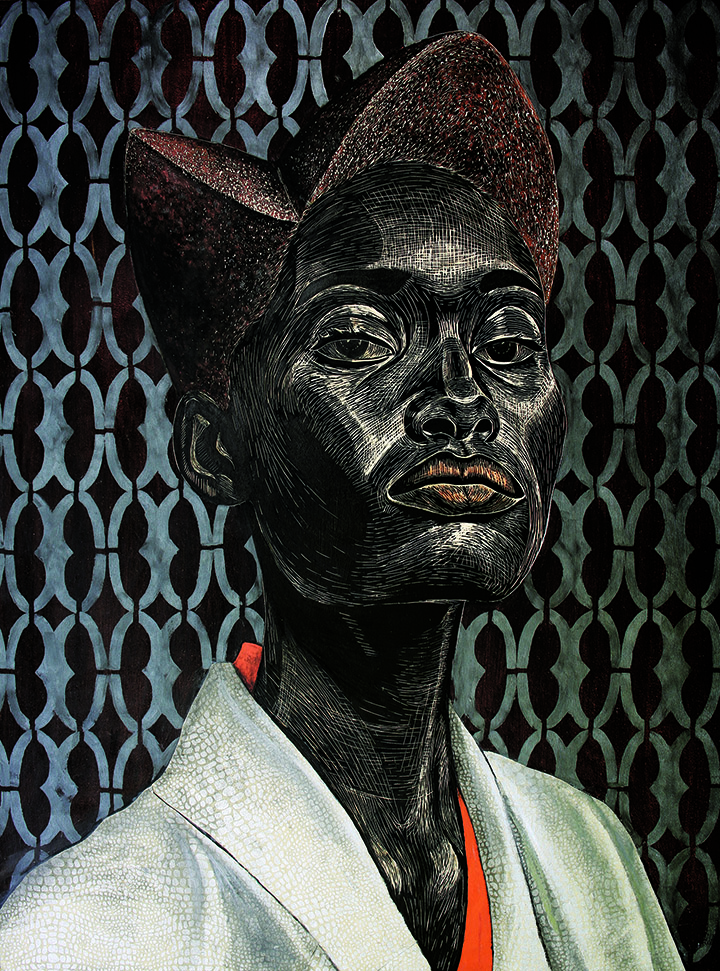
With her residency at the Joan Mitchell Center in New Orleans rescheduled to 2022 due to the pandemic, LaToya Hobbs makes a comeback this year with her latest group exhibition in New York and talks us through her inspiration behind printmaking.
LaToya Hobbs is a Baltimore-based artist whose relief printmaking are an ode to everyday inspirational women. LaToya’s work deals with figurative imagery that explores the intersection of race, beauty and identity concerning women of African descent, facilitating an ongoing dialogue about the Black female body in hopes to produce a more balanced perception of Black womanhood that dismantles prevailing stereotypes based on Euro-centric standards of beauty.
The historic nature of printmaking stems out of protest and communication. This is significant to Hobbs’ work because she communicates how past influences, expectations, and personal preferences resonate with women of color in the 21st century and are expressed through the canvas of their bodies.
“The act of cutting away from my matrix (the surface of the wood or linoleum block) to shape an image is synonymous with the way one has to cut away negative ideologies imposed on them by others to expose or embrace their true selves,” the artist says. “In this same sense, Black women have had to cut away the negative stereotypes imposed on them by external forces to express their true identity.”
Hobbs’ exhibition record includes several national and international exhibitions such as the Tulipamwe International Artists’ Exhibition at the National Art Gallery of Namibia, Windhoek, Namibia (Africa) and has recently been added to the Petrucci Family Foundation Collection of African American Art. In addition to her practice, the artist devotes her time to teaching and inspiring young artists as a professor at the Maryland Institute College of Art.

When did you decide to become a professional artist?
The arts have always been a part of my life; visual art, music and dance have been things I’ve participated in regularly since I was a child. I took art classes in Jr. and Sr. high, but once it was time for me to go to college I abandoned them because it was time for me to focus on getting a “real job,” a message that many artists and creative people are bombarded with. When I started college I chose to major in Biology with plans to go to medical school. I stayed on that path until my junior year and realized that I was very unhappy, unfulfilled and needed to reconnect with my creative side. The following year I changed my major to art and decided to commit to pursuing a career as an artist.
How did you decide to concentrate on portraits as a way to explore the themes of identity and beauty concerning women of African descent?
When considering the history of painting there is a certain prestige that comes along with having your portrait painted. I’ve always been drawn to creating images of women. The ultimate goal of my work is to challenge the negative stereotypes and misconceptions often associated with Black women by creating images that inspire a more accurate representation; my work is an opportunity to share how I see us which is regal, sophisticated, and beautiful. More and more we are coming to realize how important representation is. Images are powerful and can be used as tools that either uplift or teardown. I choose to uplift.
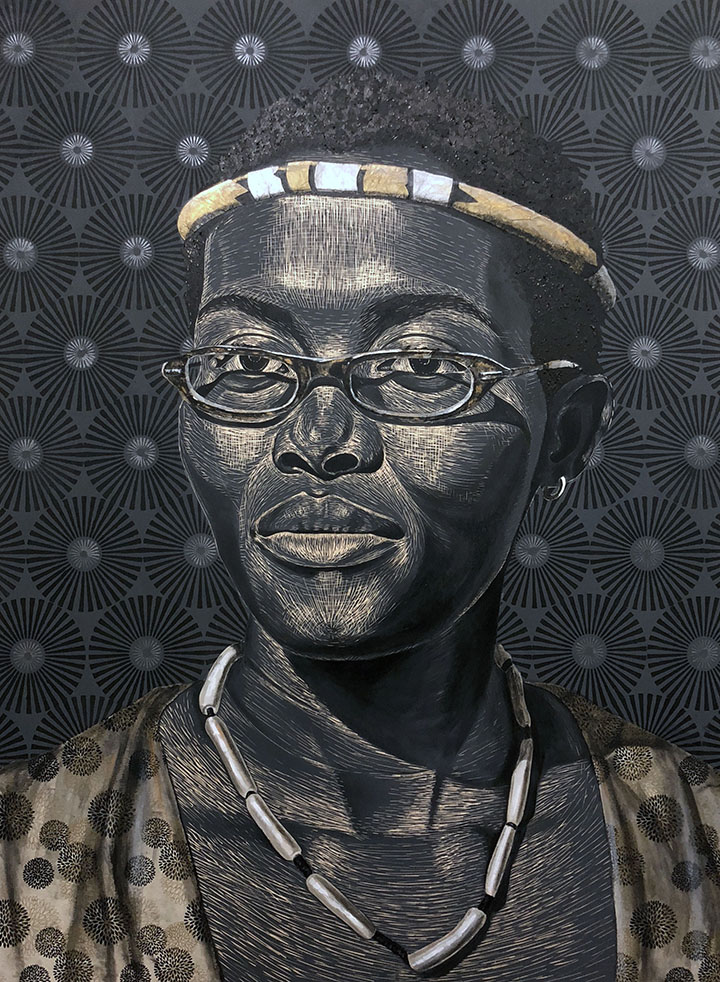
What is your studio environment like and how does it help you to be creative in your work?
My studio is in the basement of my home which makes it easy for me to flow between my home life and art practice. It’s a place where I can shut out the rest of the world and just focus on my work. As long as things are organized and I have some good music I’m all set! I also really enjoy having scented candles in my space; they function as a form of self-care that help keep me relaxed and set the atmosphere.
You create your portraits both as mixed media paintings and woodcuts. What do you like about both mediums, and how do you think their effects differ from one another in your pieces?
When I decided to pursue my art career I automatically decided to study painting (oil on canvas) and later took an interest in printmaking, particularly relief, which is now one of my favorite mediums. Over the past few years I’ve been incorporating collage into my work which was inspired by being asked to participate in the Bearden 100, a project centered around centennial celebration of the life and work of Romare Bearden back in 2012. My current practice involves creating pieces that marry my printmaking and painting practices on a singular surface. The method by which I choose to create a work is influenced by the subject or the particular image I’m working from and sometimes I will experiment with using the same image in multiple ways. For example, I may initially execute a work as a monotype that serves as a preliminary work that will eventually be translated into larger scale mixed media painting or Woodcut. When I start a new piece the biggest decision I make is weather I want to carve or paint the figure and all other decisions about the work are based off of that. I also think about the textures I’m trying to simulate and what is the most effective technique to execute it in. Some things work better as a carving, and others function better with collage or painting. If I had to choose between them I would say I am most excited about my relief carvings right now. I love texture and carving provides that along with a sense of energy and rhythm that comes from the way my line work moves across the surface.
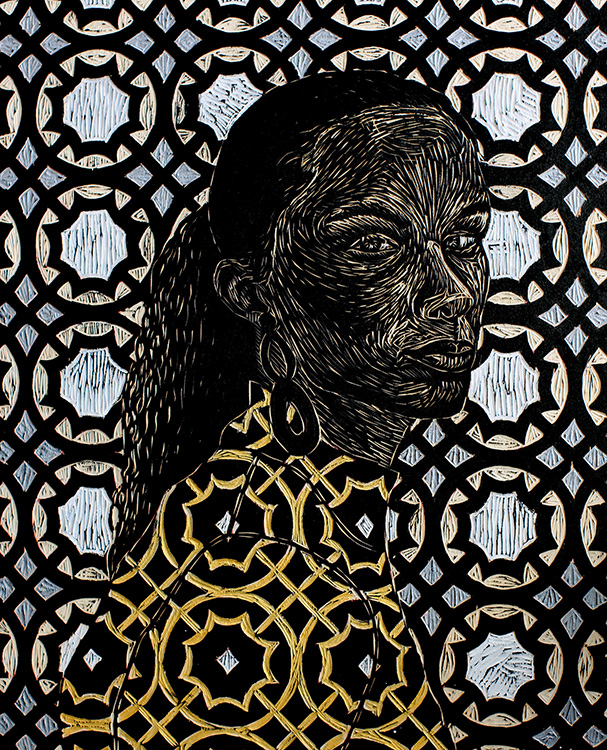
What artists or creatives inspire you to continue to make your work?
Its always a compliment when my work is compared to Elizabeth Catlett’s as she is one of my major influences. Her work resonates with me because of the way she was able to capture the dignity and beauty of her subjects. Both her printmaking and sculptural works were executed with immense technical skill which is something I strive for in my work. Catlett was unapologetic about the nature of her subject matter and the boldness of her imagery. Another early influence is Berkely L. Hendricks. When I saw his exhibition “Birth of the Cool” at the Studio Museum In Harlem some years back it affected me in a major way. The large-scale representational paintings of Black people in minimal settings depicted as solid background color were confirmation of the direction I wanted to take with my work. Aesthetically speaking I’m influenced by some of the more contemporary artists such as Mickalene Thomas, Kahendi Wiley, and Kerry James Marshal, and the list can go on and on. Recently I’ve been inspired by the work of Njideka Akunyili Crosby. I love the way she approaches portraiture, placing figures in very specific and curated spaces. I am also enjoy her approach to mixed media taking various materials and putting them together in seamless way. The biggest influence on my work are the women I interact with on a daily basis. Almost all of the images I create are of women that I know personally or have had some type of interaction with. This helps me to become even more invested in the work.
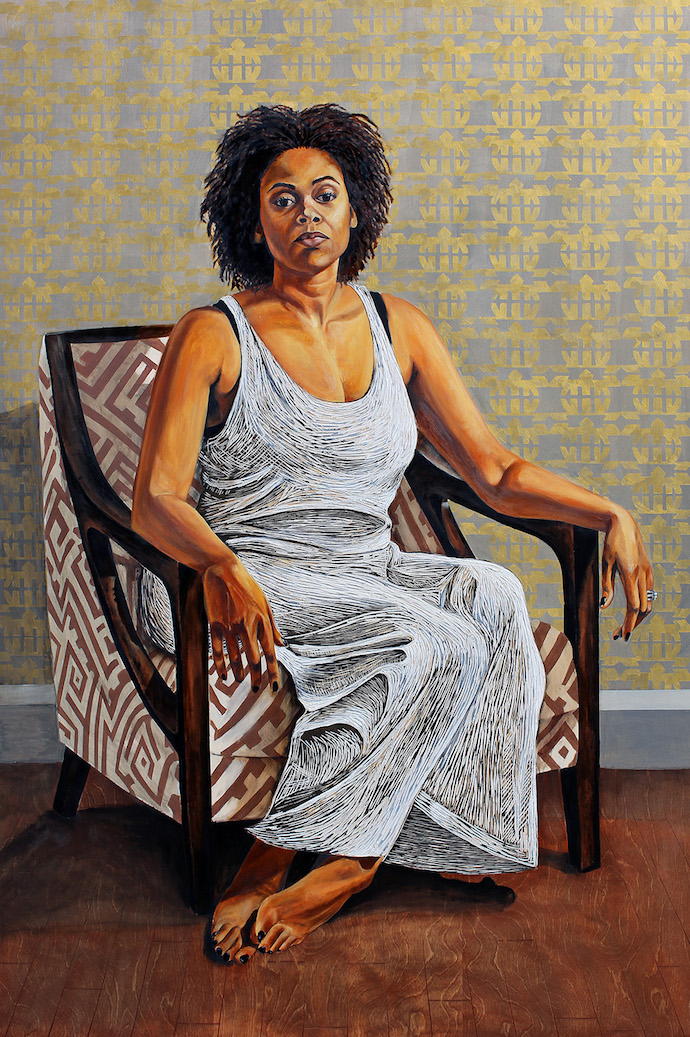
As a founding member of Black Women of Print, a digital space for Black women printmakers, what kind of community have you seen emerge in printmaking?
Printmaking is already a very community-oriented practice, especially when you consider the print studio environment where collaboration often takes place. What Black Women of Print has given me is opportunity to engage with and learn about other Black Women Printmakers (past and present) whom I was not aware of. In my arts education I was not exposed to very many artists of color and even fewer women printmakers so it’s nice to have this platform where we can exchange and document our own narratives.
How has your life and your personal experiences affected your work and inspired you?
I feel that creatives across all disciplines bring their life experiences into their work in some capacity and inspiration can come from any number of things. Some of the more recent works I’ve completed are inspired by my role as a mother and the women in my community. I’ve been thinking about what it means to be a Matriarch, the insight I’ve gained from my foremothers and the legacies I want to pass along to my children.
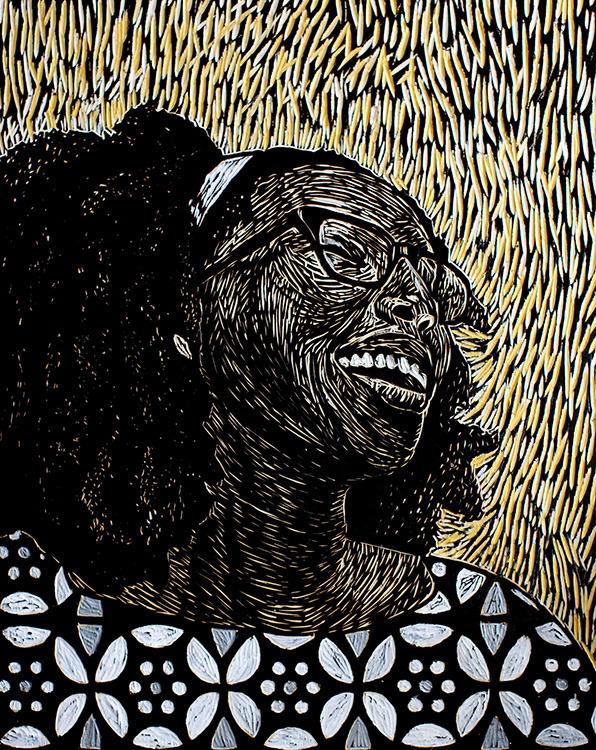
Your description of the parallels between the carving process of woodcuts and the cutting away of negative stereotypes of black women is incredibly powerful. How did you discover this significant metaphor in your artistic process?
I started thinking about my work with this symbolism in 2012. I was exploring how black women navigate the intersection race and identity and how those factors affect our notions of beauty. Most of the work I was producing were large-scale woodcuts and I was starting to introduce the process of fusing elements of both painting and printmaking together. I was also thinking of more conceptual ways to address my printmaking practice outside of process driven techniques. Considering the importance of my relief carving and my intent to dismantle stereotypes through my work, this idea just made sense.
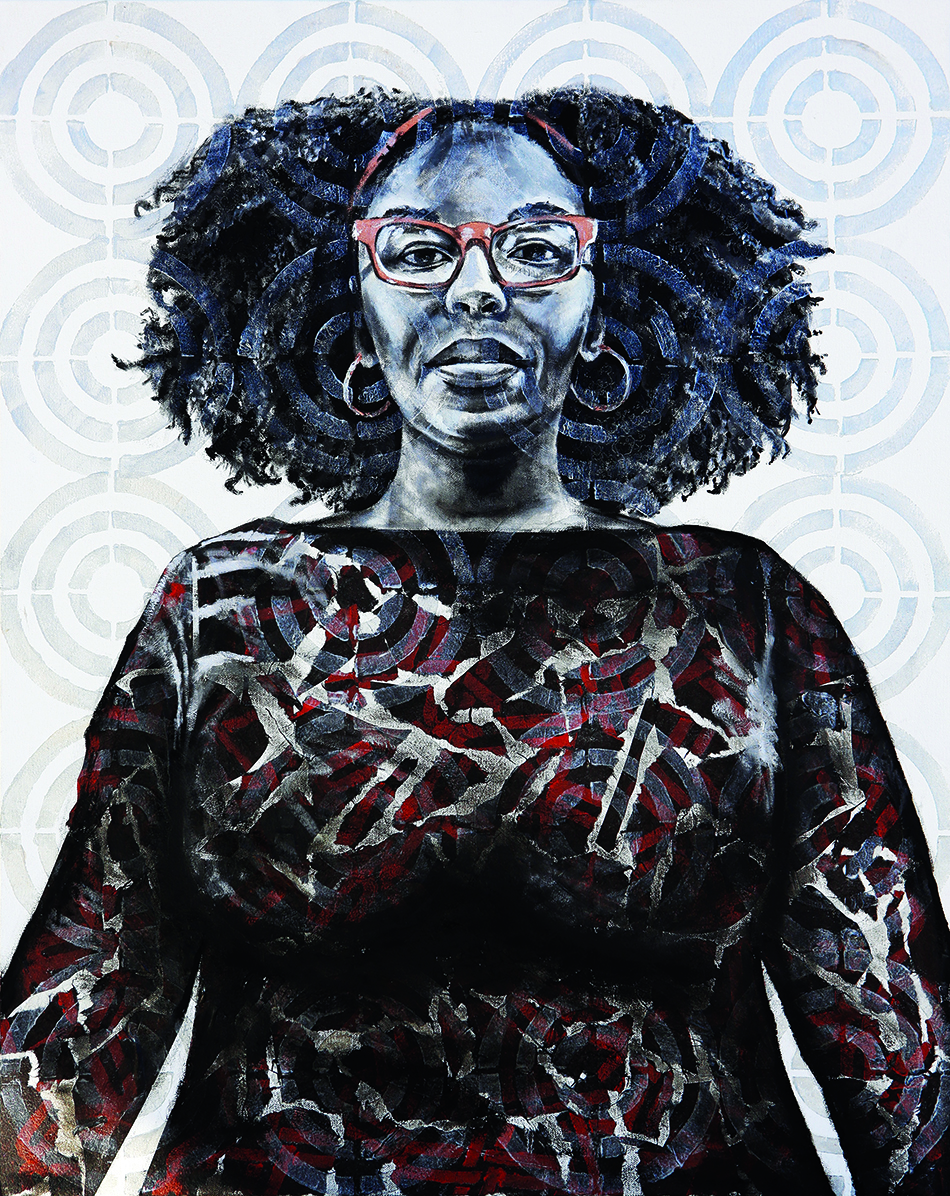
What advice would you give to aspiring artists that want to succeed?
Consistency is key! You have to keep producing work even if you feel like things aren’t happening for you as fast as they should. You can’t get around putting in the time needed to develop a mature practice. Be clear about the type of career you want to have and know that its ok if it takes you a little while to figure it all out. Be honest with yourself and realistic about what it will take to achieve the goals you set. Don’t compare yourself with others; your journey won’t look like anyone else.
Featured Image: Latoya Hobbs, Prosper: to do well, succeed or thrive. View more works by the artist at Studio 525’s ‘VOICES’ exhibition at 525 West 24th Street in New York, on view until September 22.


